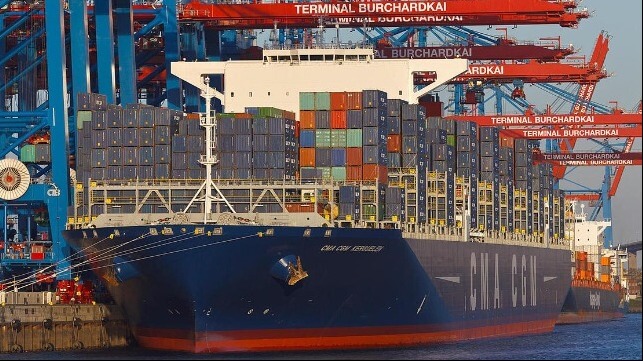First Shore Power Capability for Containerships Being Built in Hamburg

Construction is underway on the first shore power installation specifically designed to handle containerships. The demonstration project is being built at the Port of Hamburg initially serving two of the terminals and is due to enter an initial test phase in 2023.
The Hamburg City Council authorized the project at the end of 2021 as part of the city’s overall plan to improve air quality and begin dramatically reducing greenhouse gas emissions by 2025. Hamburger Hafen und Logistik (HHLA) which will have the first capability at two of its container terminals, points out that shore power is complex and not easily installed.
Working with the successful installation of shore power for cruise ships at Hamburg Altona as the model, the Hamburg Port Authority, as proprietor of the quaysides at the Port of Hamburg, commissioned Siemens to construct the shore power systems. The stations are being built at the container terminals Burchardkai and Tollerort operated by HHLA.
While the use of shore-side electricity substantially reduces the emissions of a docked ship, HHLA explains some of the challenges required to making shore power available for ships in the port. They pointed out that for a containership to turn off diesel generators usually used for power on board, it requires about as much power as a small city.
The electric grid and generation capacity needs to exist to support the installation or additional generating capacity is required before shore power can be made available. Many ports around the world looking to provide shore power faces these challenges, while experts also point out that increasing the on-shore power generation needs to be done in an environmentally appropriate means so as not to transfer the emissions from the ship to the power plant.
HHLA explains that currently approximately 75 percent of all ships are equipped with 60-hertz onboard power systems. Yet only a quarter of all countries’ electrical grids operate on this frequency. For example, Germany uses 50 hertz. This requires a complex undertaking to adapt the land frequency and onboard frequency to provide safe power to the ships.
The first shore-side power station in Europe for cruise ships began operations at the Cruise Center Altona in 2016. Since then, numerous ports have adopted shore power and with pending regulations in Europe for in-port emissions, it is expected that more ports will adopt shore power.
While shore power is currently mostly used for cruise ships and ferries, several ports have begun to explore extending it to commercial shipping. Gothenburg, Sweden reported that it was the first port to provide shore power for tankers. The Port of Rotterdam and Stolt Tankers working with Vopak Botlek recently announced a six-month feasibility study for the use of shore-based power for chemical tankers. They highlighted the unique safety concerns of using shore power with tankers.
Hamburg is also participating in a collation with the ports of Antwerp, Bremerhaven, Haropa Port in France, and Rotterdam looking to coordinate their efforts at launching shore power. The five port authorities are calling for a coordinated approach to reduce capex costs through innovation and to provide clarity that will stimulate the shipping sector to equip vessels and make it possible for vessels to use shore power in multiple ports. Working together they plan to coordinate the efforts in their respective ports to ensure consistency in shore power to encourage the industry’s adoption of the technology for a wider segment of ships.
